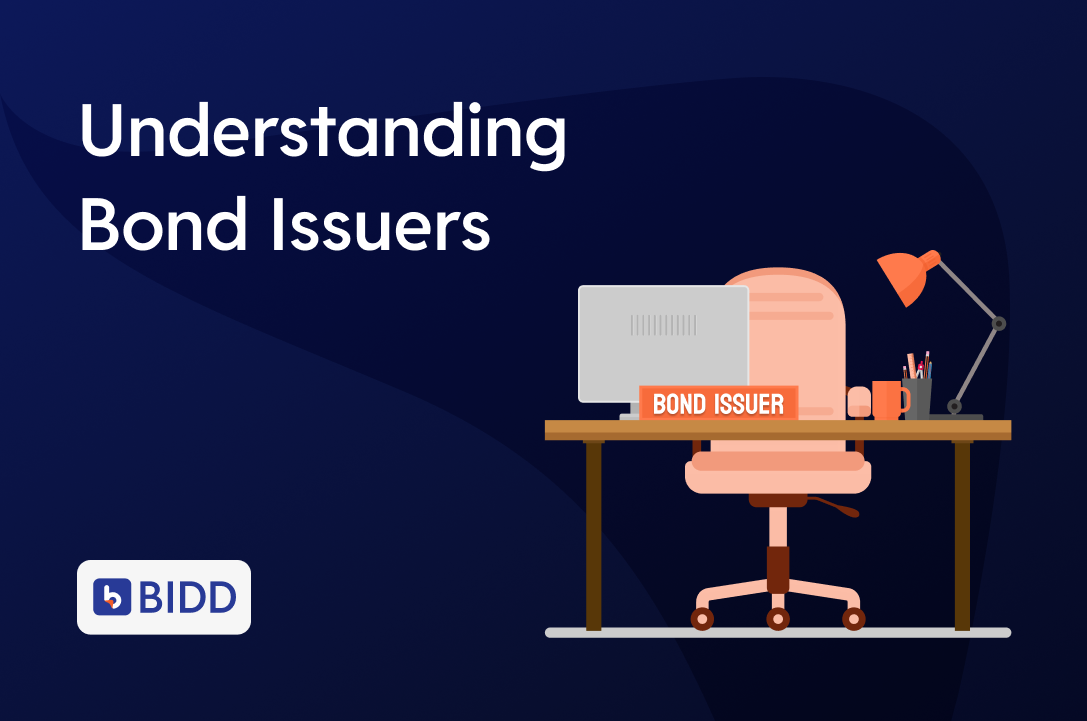Part 2 of the Beginner’s Guide to Bonds
A Quick Thought to Begin With
When you’re lending your hard-earned money, wouldn’t you want to know exactly who you’re lending it to?
With Fixed Deposits (FDs), the answer is straightforward — your bank is the borrower.
But with bonds, it gets more interesting.
You have multiple types of issuers to choose from — each with different levels of risk and return. And understanding who the issuer is can tell you a great deal about the bond’s safety, liquidity, and potential yield.
Let’s break it down.
Who Can Issue a Bond?
In simple terms:
Anyone who needs to raise capital — and is trustworthy enough to attract lenders like you.
Here are the main categories of bond issuers in India:
1. Government of India (G-Secs)
The safest option available.
When you invest in a Government Security (G-Sec), you’re effectively lending to the Indian government.
Purpose:
To fund national priorities — infrastructure, defense, welfare, education, etc.
Risk Level: Ultra-low
Returns: 6%–7.5%
Ideal for: Conservative investors, retirees, or anyone seeking capital protection
2. State Governments (SDLs)
Also known as State Development Loans, these are similar to G-Secs but issued by individual states to fund local development.
Purpose:
Projects like roads, public transport, power plants, and education.
Risk Level: Very low
Returns: Slightly higher than G-Secs
Notable: SDLs carry constitutional backing
3. Public Sector Undertakings (PSUs)
These are government-owned enterprises operating in sectors like energy, finance, and infrastructure — examples include NTPC, REC, and NHAI.
Purpose:
To raise working capital or fund large-scale expansion.
Risk Level: Low to moderate
Returns: 7.5%–9.5%
Perceived as: A reliable middle ground between G-Secs and private corporates
Bonus Tip: Many PSU bonds are AAA-rated, which enhances investor confidence
4. Private Corporates
From blue-chip names like Tata Capital to mid-sized businesses, corporates issue bonds to access capital more cost-effectively than bank loans.
Purpose:
Business expansion, refinancing, or operational needs.
Risk Level: Varies by issuer and credit rating
Returns: 7%–11% or more
Important: Always check the credit rating and financials of the issuing company
5. Municipal Corporations
Urban local bodies, such as the Pune or Ahmedabad municipal corporations, can issue Municipal Bonds to fund city-level projects — metro rail, sanitation, smart city development, and more.
Risk Level: Moderate
Returns: Competitive (typically 7.5%–9.5%)
Note: Still a growing segment in India, but gaining momentum with smart city initiatives
Why the Issuer Matters
Who you lend to directly affects the safety of your capital.
A simple analogy:
- Lending to the Government of India? Like lending to a wealthy, reliable uncle who has never defaulted.
- Lending to a PSU? Similar to lending to your salaried cousin with a steady income.
- Lending to a corporation? Like lending to a friend running a promising startup — potential for higher returns, but you’ll want to do your due diligence.
Want to dive deeper into how bonds work?
Check out our detailed blog on What Are Bonds to learn more.
Snapshot: Bond Issuers at a Glance
| Issuer Type | Safety | Returns | Liquidity | Examples |
| Govt of India (G-Secs) | Ultra-safe | 6% – 7.5% | Moderate (some listed) | RBI Bonds, T-Bills |
| State Governments | Very safe | 6.5% – 8% | Moderate | SDLs |
| PSUs | Low – Moderate | 7.5% – 9.5% | High | NHAI, REC, IRFC |
| Corporates | Varies | 7% – 11%+ | High (if listed) | Tata Capital, L&T, HDFC |
| Municipal Corporations | Moderate | 7.5% – 9.5% | Low – Moderate | Pune, Ahmedabad |
How to Decide Whom to Lend To
Ask yourself:
- Is capital protection my top priority? → Consider government or AAA-rated PSU bonds
- Am I seeking higher yields with acceptable risk? → Corporate bonds may fit your needs
- Want a balanced approach? → Build a diversified bond portfolio across issuers and sectors
And most importantly —
Always check the credit rating.
AAA and AA+ ratings typically indicate stronger creditworthiness and lower default risk.
While higher returns may seem attractive, they often come with proportionately higher risk. A balanced strategy is key.
Final Thoughts
From central and state governments to municipal bodies and large corporations, bond issuers in India span a wide range of profiles — each offering a distinct mix of risk, return, and reliability.
Understanding who you’re lending to is a fundamental part of smart fixed income investing.
And the good news?
You no longer need to be a finance expert to navigate it.
Platforms like Bidd simplify bond investing by making it easy to compare issuers, assess credit ratings, and make informed decisions — all through a user-friendly interface.
So the next time someone says,
“Bonds are risky,”
you can reply:
“Depends on who issued it. Not all bonds are created equal.”
Disclaimer: This blog is intended solely for educational and informational purposes. It should not be construed as investment advice, a recommendation, or an offer to buy or sell any financial products. Please consult a registered financial advisor before making any investment decisions.




